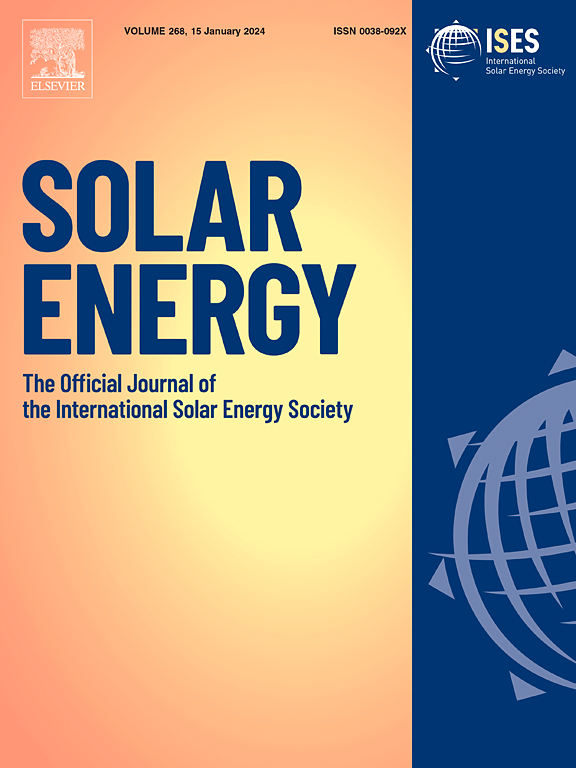An investigation on daylight in PV greenhouse for mushroom vertical cultivation in Kunming, China
IF 6
2区 工程技术
Q2 ENERGY & FUELS
引用次数: 0
Abstract
Recently, there has been an increasing emphasis on generating energy from renewable sources, resulting in the installation of photovoltaic (PV) modules on the roofs of agricultural greenhouses. The optimal combination involves integrating a photovoltaic greenhouse with vertical growing of edible mushrooms. This synergistic approach allows for increased planting capacity and enhanced exploitation of solar radiation. However, there is very little progress in the evaluation of spatial light for such photovoltaic planting systems. This study examined the amount of daylight accessible in a photovoltaic greenhouse for mushroom vertical cultivation in Kunming, China. The spatial intensity of daylight was simulated with RADIANCE, a software application that simulates solar and light rays by ray-tracing. The findings indicated that the average disparity in sunlight intensity between each layer of the shelf of edible mushroom, when arranged in an east–west or north–south orientation, was below 9% at noon. However, the latter configuration resulted in a more even distribution of daylight in the greenhouse. The shading percentage remains relatively consistent during the four significant days of spring equinox, summer solstice, autumn equinox, and winter solstice. On the summer solstice, the shadow range is primarily concentrated in the greenhouse due to the elevated position of the sun. This leads to a lack of consistent lighting across different heights within the greenhouse. As the solar altitude angle decreases, the intensity of light decreases but the light inhomogeneity increases. These findings have the potential to be used as design techniques for supporting vertical planting in PV greenhouse planning.

求助全文
约1分钟内获得全文
求助全文
来源期刊

Solar Energy
工程技术-能源与燃料
CiteScore
13.90
自引率
9.00%
发文量
0
审稿时长
47 days
期刊介绍:
Solar Energy welcomes manuscripts presenting information not previously published in journals on any aspect of solar energy research, development, application, measurement or policy. The term "solar energy" in this context includes the indirect uses such as wind energy and biomass
 求助内容:
求助内容: 应助结果提醒方式:
应助结果提醒方式:


